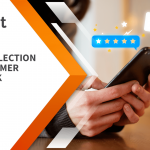How manufacturer or distributor can increase sales with help of retail chain personnel or partners
The inCust platform enables manufacturers and distributors of goods and services to set up various mechanics to stimulate sales. These mechanics are easy to combine and modify. They will help you automate cooperation with salespeople, employees, or store owners, and motivate them to sell more of your products.
You can increase sales in many ways, in terms of incentives and mechanics. We will tell about the most popular methods.
TOP-6 scenarios for increasing sales for manufacturers
Scenario #1: B2B2C Sales, Increased Sales Motivation
Example: A household appliance manufacturer wants to motivate retailers to sell more of their branded products. For this, the manufacturer can offer salespeople to earn bonus points when they sell its products. The manufacturer adds a unique QR code inside the warranty card. A seller runs the inCust chatbot on their phone and scans this code using the chatbot functions to register each sale. The inCust platform immediately credits a certain number of bonus points for this salesperson and sends the information to the chatbot. The salesperson can later spend collected bonus points on the manufacturer’s website.
Rewards can be credited to the seller:
– for sales
– for educating customers
– for activity (display of goods, promotions, carrying out a presentation)
How to record sales
In all the listed cases, a salesperson uses a chatbot or a mobile application by inCust for record-keeping.
1) Use a unique product code or an insert in the product to track the fact of the sale and credit a reward to the salesperson. The salesperson scans the code when inspecting the product before handling it to a customer or issuing a warranty card.
The operation gets registered by the platform, which calculates rewards according to the rules set by the administrator.
2) Make a photo of a customer’s receipt. Then, you can set up a neural network to recognize the code printed on the receipt or (if available) recognize a QR code. It is also possible to check the receipt manually. The code from the receipt will get into the platform via the API, after which the platform credits a reward.
3) Use a neural network to determine the uniqueness of the products by indirect indicators: a tax stamp on the package, the fact of opening the package.
4) If a cash register or a similar checkout software already captures the name or ID of a salesperson, who made the sale, it is possible to integrate the inCust platform with this software via API and credit rewards this way.
What can usually be credited?
One can credit funds (goods, cash, internal currency) or bonus points (deferred discount) to a customer account of the customer in the platform.
How do salespeople spend their accumulated funds?
Usually, there is a storefront on the website or in the mobile application where a salesperson can:
– leave a request for withdrawal of funds to receive a reward in money;
– order goods with the possibility of paying for part of the purchase amount with bonus points as a discount;
– exchange savings for partners’ digital certificates (for example, a $20 voucher for purchases in an online store). To assist in this operation, the inCust platform supports issuing of unique codes received from partners;
– if there exist partners that are interested in getting new customers, they may provide discount certificates for free. Salespeople can exchange their accumulated rewards for these certificates;
– also, you can issue coupons or certificates directly to salespeople for some significant achievements. For this, the necessary rules need to be additionally configured in the platform.
Tasks for retail chains employees
To diversify the options for earning bonus points and add an element of gamification, salespeople can issue game “orders”. For example, a manufacturer may use its application to work with salespeople. By installing this application, a salesperson will be able to receive various tasks and challenges, for which they will receive rewards from the manufacturer. Tasks may also be placed in the chatbot or on the manufacturer’s website.
The possible tasks can be:
- completion of a certain number of sales per day, week and month;
- sale of a specific product: the one who sells more than X items during a month, gets the 1st place and a prize; smaller prizes are offered for the 2nd and 3rd places;
- carrying out a presentation or training;
- making a video with a story about products and their benefits.
Scenario #2: B2B2C Sales that focus store owners
Example: a tobacco manufacturer wants to encourage owners of small retail chains to sell products of its brand. How is this different from the previous scenario? In this scenario, the manufacturer establishes a relationship with the owner of a store or a point of sale, who receives the reward. The problem is that usually it is a distributor who delivers products to points of sale, and it is not always possible to automatically credit rewards. To address this complication, a store owner may install a mobile application and keep a record of purchased products. For example, each block or pallet of goods may have a unique code. When a salesperson scans this code, the owner will receive a reward.
Rewards can be credited to the owner:
– for sales
– for activity (control of the layout, promotions, behavior of the presentation)
– for educational activities
How to record sales
- Use a unique code on a pallet or in an invoice and scan it using a chatbot or mobile application.
- Register each unit of a product by its unique code. The code can be scanned using a chatbot or mobile application; it is also possible to use a neural network for scanning and recognition.
- integrate the inCust platform with a warehouse system used by a distributor. A store owner is rewarded automatically via API when products are shipped. The owner will receive an alert about the reward in the mobile app or chatbot.
What can usually be credited?
One can credit funds (goods, cash, internal currency) or bonus points (deferred discount) to a customer account of the customer in the platform.
How do store owners spend their accumulated funds?
An owner of the point of sale orders goods from a distributor and uses the sum of the earned rewards as partial or complete payment for those goods. A manufacturer works with this distributor and compensates the costs of products, shipped to such orders.
Scenario #3: automation of provision of discounts depending on achievements of partners
Example: a supplier of agricultural machinery parts provides wholesale dealers with a discount. Usually, this discount is negotiated separately with the supplier’s manager and depends on sales volumes. This approach causes the following problems:
- when providing a large discount for a certain volume, it’s difficult to lower the discount when sales go down. For example, for sales over $1 million, a 20% discount was offered, and when sales dropped to $100 000, the discount remains the same due to the dealer’s objections or contractual obligations;
- possible fraud of managers, who can offer the maximum discount to a dealer in exchange for some cashback;
- lack of partners’ motivation to increase sales
Using the inCust platform, you can set up a dynamic automatic discount that depends on sales volumes.
For example, the discount will be calculated according to the chosen thresholds for total sales per three months period:
<$100,000 in three months – 0% discount
$100,000 – $500,000 – 5% discount
> $1 mln – 10% discount
With this scheme, a manager simply enters an order into the system, and the system calculates the current discount.
The implementation of this mechanic is based on the interaction of an accounting system with the inCust API. When you start using the platform, you set up rules for calculating discounts. Later, the accounting system transfers each order to the platform, and the rules are applied automatically, so the human factor is eliminated. Instead of discounts, it is also possible to apply a deferred discount as bonus points.
Scenario #4: Encouraging company employees to buy exactly your product
Example: an office supply distributor offers a loyalty program to an employee of a client company who makes a purchasing decision (a buyer). In this case, it can be an accountant who orders office supplies, or an office manager. The supplier offers its goods at a good price, and also gives the person making the purchase an opportunity to receive cashback.
For this, you need to set up crediting of rewards to the salesperson for the purchases made by the client company.
How to record sales:
1. Automatic crediting
A supplier of goods registers a phone number or an email address of the employee in its accounting system. When an order is being paid for, the accounting system accesses the inCust platform via API and sends the order as well as the phone number or the email address of the buyer. The buyer is credited a reward according to the rules of the loyalty program. Then, s/he receives an SMS message or an email notification about the credited reward.
2. Manual crediting
After the order is paid for by the buyer, the supplier’s manager starts inCust Terminal application, where the order amount and the buyer’s phone number or email address are entered. The buyer is credited a reward according to the rules of the loyalty program. Then, s/he receives an SMS message or an email notification about the credited reward.
What can usually be credited?
One can credit funds (goods, cash, internal currency) or bonus points (deferred discount) to a customer account of the customer in the platform.
How do participating employees spend their accumulated funds?
Employees can spend the accumulated funds in the same way as described in scenario #1.
Scenario #5: a referral program for your employees and partners’ employees
Example: the stationery retail chain wants to involve teachers in a loyalty program to have them give a recommendation with a discount to parents and earn on this. A teacher gives parents a reference with a discount that will let them make profitable purchases in the chain’s stores. Each recommendation is linked to a specific teacher, and in the case of a purchase, the teacher immediately receives funds to the account.
A teacher can give a recommendation in many ways: offer a referral code, the code scanned on a phone or printed materials, send the code as an SMS or as an instant message, link to a web page with a coupon, or post it on a social network.
The inCust system will track all referral-initiated sales. These rewards can be multi-level. For example, one person gave a recommendation to a second one, that one shared it with the third one, the third one made a purchase. In this scheme, every recommender receives a reward.
Scenario #6: Using partners to incentivize customers
Example: A jewelry factory sells jewelry through multiple partners and rewards customers regardless of where they purchased the product. A customer buys a piece of jewelry manufactured by a jewelry factory and receives bonus points that s/he can spend on the manufacturer’s website by ordering other products. This scheme enables you to attract new partners who need new customers. For this, a jewelry factory may specify some jewelry retail chain or store as a partner, where customers can spend earned bonus points and receive the discount from the partner’s store. After that, the factory compensates the sums of provisioned discounts to this partner.
How to record sales:
A customer comes to a jewelry store, shows a QR code (or another code) on a mobile phone or in a chatbot, shows a coupon or SMS with a code. A salesperson scans this code using the inCust Terminal application and registers the order. Through the API, the information about the sale is sent to the manufacturer. All sales are accounted automatically, and mutual settlements become trivial.
We can help you choose and customize any loyalty program to satisfy the specific needs of your business. Many companies think that loyalty programs work best in B2C businesses, missing the fact that B2B businesses also employ people. Those people would like to be encouraged and rewarded and to have interactions with other businesses pleasant.
Using inCust’s superpowers, you can easily build a modern, technologically advanced business loyalty program!





